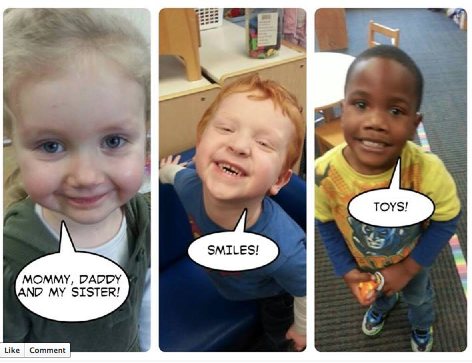Originally posted on EJewishPhilanthropy
As part of the #NetTalks Alumni Engagement Webinar Series, Beth Kanter, nonprofit social media and engagement guru, taught an important lesson during her recent presentation: you must invest in building your online alumni ecosystem, and then you can turn to activating it to achieve your stated goals.
You don’t just want people to “like” you. And you don’t actually want them to start engaging the moment they become alumni. And you don’t really want to share information about your program with them. Really.
Why?
- Because “liking” your Facebook page or your content is just the beginning. It’s potential, but it’s not the goal. You want alumni to follow you, engage, advocate for you, and donate. The “like” is merely one early step along this path.
- Because beginning to engage should happen before they become alumni – focus on developing long term relationships and mature communication channels that flow in both directions!
- And finally, because you want to be in conversation with alumni, not broadcasting information at them.
Building your online alumni ecosystem cannot be based on one-directional broadcasts, nor rest primarily on reminiscing about the past. The opportunity to leverage social media and networks is huge, but requires that we pivot our approach to be more empowering, more conversational, and more personal. (Join the next webinar with James Fowler on Feb. 19th to learn about “Mobilizing the Network: The Power of Friends”.)
Take this example from URJ Camp Kalsman: When beginning to hire staff for the summer, they turned to their alumni (and potentially current older campers and parents of current campers) on Facebook to ask, “We are in the midst of hiring our summer staff and we want to hear from you! What do you love to see in a camp counselor?” By asking a question, the camp invites engagement, values the perspective and experience of alumni, and gains important insight for their future hiring. They’ve moved from “liking” to “engaging” and those who respond actually may influence the experience of future campers.
Beth also showed several examples from schools that are using reminiscing as an entry point to strengthen their network. Their “Throwback Thursday” photos are intended to go beyond reminiscing – they are getting alumni to tag their friends in the group photos, which creates or re-creates a strong group dynamic and builds energy.” It’s not about the school, it’s about the relationships that were fostered there. The Shulamith School for Girls in Brooklyn, NY had 78 comments on a photo from the 1970′s, as alumni talked with each other and reconnected with old friends.
Moving from engagement to activation, The Jewish Community High School of the Bay featured photos of beloved teachers and coaches holding signs (“Coach says GIVE!”) that prompted alumni to join in the communal effort to reach their fundraising goal – tagging friends to contribute and asking for photos of their favorite faculty.
Social media is social as much (or more so) than it is media. As a professional seeking to engage and activate your alumni community, consider yourself more “party host” than “alumni magazine editor”. To play this role, you must have the right tools in your toolbox and know how to use them. However, doing it well goes far beyond technical proficiency. Be a good listener, steward conversations, and empower your biggest fans to enrich the network with their voice, actions and relationships.
If you missed Beth’s webinar, view her presentation here. To learn more about activating an alumni network, join the next #NetTalks webinar with James Fowler on Feb. 19 on “Mobilizing the Network: The Power of Friends”. Register here.


 A very creative campaign can promote the school, without necessarily talking about academic excellence or the nurturing environment. Take for example a marketing campaign for
A very creative campaign can promote the school, without necessarily talking about academic excellence or the nurturing environment. Take for example a marketing campaign for 
 The campaign ran for five weeks and opened new doors for the school to reach prospective parents. For the first time, Mazel Day School officially partnered with early childhood centers in the area: KingsBay Y, JCH of Bensonhurst, and Shorefront Y. These new relationships can now be leveraged for other partnership opportunities and for reaching prospective parents. The campaign increased exposure of the school to the broader community. Mazel Day School Parents overheard parents who were not part of the school talking about the contest. The Mazel Facebook page experienced a significant boost during the competition period, including 50 news likes on the Facebook page. The last time they had so much traffic was when their school was destroyed during Hurricane Sandy; now the attention was due to a positive story that truly highlighted the school and the community. In their reflection about the implementation of the campaign, the Mazel parents wanted to organize a larger group of parents to lead and implement the campaign to reach an even larger audience of prospective parents.
The campaign ran for five weeks and opened new doors for the school to reach prospective parents. For the first time, Mazel Day School officially partnered with early childhood centers in the area: KingsBay Y, JCH of Bensonhurst, and Shorefront Y. These new relationships can now be leveraged for other partnership opportunities and for reaching prospective parents. The campaign increased exposure of the school to the broader community. Mazel Day School Parents overheard parents who were not part of the school talking about the contest. The Mazel Facebook page experienced a significant boost during the competition period, including 50 news likes on the Facebook page. The last time they had so much traffic was when their school was destroyed during Hurricane Sandy; now the attention was due to a positive story that truly highlighted the school and the community. In their reflection about the implementation of the campaign, the Mazel parents wanted to organize a larger group of parents to lead and implement the campaign to reach an even larger audience of prospective parents. What are you thankful for this week? I'm thankful for this catchy Facebook post from Shannon Hall and her team at the
What are you thankful for this week? I'm thankful for this catchy Facebook post from Shannon Hall and her team at the  Then, in order to attract more attention then they would have by posting the photos individually, they collaged three responses into one photo using
Then, in order to attract more attention then they would have by posting the photos individually, they collaged three responses into one photo using  Social media, like other major communication revolutions before it (think: printing press) have radically changed the way we learn, connect and organize. The impact on culture and behavior is significant – we have new ways to connect with our communities, find meaning, express ourselves and engage. The new ease of organizing is fundamentally changing the role that organizations play for their constituents. This is great news for the Jewish community, if we are able to take advantage of it.
Social media, like other major communication revolutions before it (think: printing press) have radically changed the way we learn, connect and organize. The impact on culture and behavior is significant – we have new ways to connect with our communities, find meaning, express ourselves and engage. The new ease of organizing is fundamentally changing the role that organizations play for their constituents. This is great news for the Jewish community, if we are able to take advantage of it.